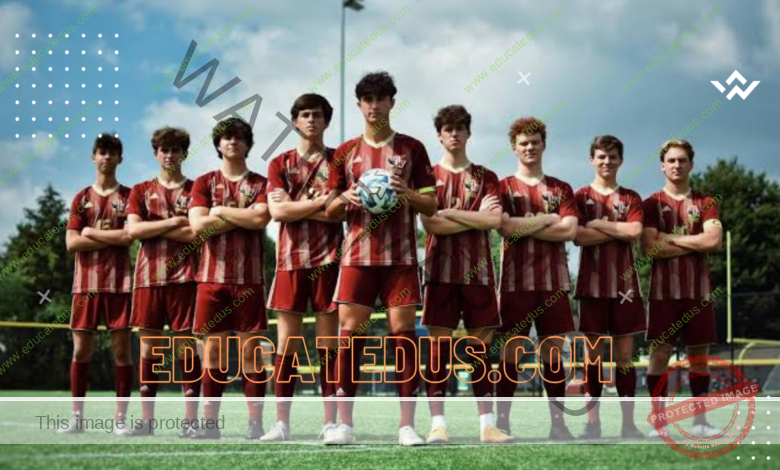Top 7 Football Academies Producing Elite Center-Backs

Football academies play a pivotal role in shaping the future of the sport by nurturing young talents and preparing them for professional careers. These institutions not only serve as a pipeline for first-team players but also contribute significantly to the club’s financial sustainability through the development and transfer of homegrown talent. In this comprehensive guide, we d into the world’s top football academies renowned for producing elite center-backs and other exceptional players.
The Importance of Football Academies
Football academies are integral to a club’s success, focusing on the holistic development of young athletes. They provide structured training programs, educational support, and a pathway to professional football. By investing in youth development, clubs ensure a steady influx of talent, maintain competitive squads, and uphold financial prudence.
Top 7 Football Academies Producing Elite Center-Backs
1. La Masia – FC Barcelona (Spain)
La Masia is synonymous with technical excellence and tactical intelligence. The academy has produced world-class center-back like Gerard Piqué and Carles Puyol, emphasizing ball-playing defenders who initiate attacks from the back. La Masia’s philosophy revolves around possession-based football, fostering players with exceptional vision and composure.
2. De Toekomst – Ajax (Netherlands)
Ajax’s De Toekomst academy is renowned for its emphasis on total football and versatility. Center-backs like Matthijs de Ligt have emerged from this system, showcasing the academy’s ability to develop defenders who are comfortable on the ball and adept at reading the game. Ajax’s commitment to youth development is evident in their consistent promotion of academy players to the first team.
3. Seixal – Benfica (Portugal)
Benfica’s Seixal academy has established itself as a powerhouse in producing top-tier center-backs. Players like Rúben Dias have graduated from this institution, reflecting the academy’s focus on physicality, tactical awareness, and leadership qualities. Benfica’s model emphasizes developing players who can excel in both domestic and international competitions.
4. Academia Sporting – Sporting CP (Portugal)
Sporting CP’s academy has a rich history of nurturing defensive stalwarts. The institution prioritizes technical skills, positioning, and mental fortitude, producing center-backs who are resilient and tactically astute. Sporting CP’s commitment to youth development has yielded numerous professionals who have made significant impacts in European football.
5. FC Bayern Campus – Bayern Munich (Germany)
Bayern Munich’s FC Bayern Campus is a testament to Germany’s structured approach to player development. The academy focuses on discipline, physical conditioning, and tactical education. Center-backs trained here are known for their robustness, aerial prowess, and strategic understanding of the game.
6. INF Clairefontaine – France
Clairefontaine stands as France’s premier national football academy, renowned for its comprehensive training programs. The institution emphasizes technical proficiency, intelligence, and adaptability. Many of France’s elite defenders have honed their skills at Clairefontaine, benefiting from its rigorous curriculum and emphasis on holistic development.
7. FK Partizan Academy – Serbia
FK Partizan’s academy is a cornerstone of Serbian football, known for producing resilient and technically skilled center-backs. The academy’s training regimen focuses on tactical discipline, physical endurance, and mental toughness. Graduates often transition seamlessly into professional football, showcasing the academy’s effectiveness in player development.
Additional Noteworthy Academies
Manchester United Academy (England)
With a legacy of producing legends like Rio Ferdinand and Nemanja Vidić, Manchester United’s academy emphasizes a blend of technical training and competitive spirit. The institution’s commitment to youth development is evident in its consistent promotion of academy players to the senior team.
Santos FC Academy (Brazil)
Santos FC’s academy is a cradle of Brazilian football talent, known for its emphasis on flair, creativity, and technical skills. While primarily recognized for attacking players, the academy also molds defenders who are comfortable with the ball and possess a deep understanding of the game’s nuances.
River Plate Academy (Argentina)
River Plate’s academy is instrumental in Argentina’s football ecosystem, focusing on developing players with tactical intelligence and adaptability. The institution’s structured programs and emphasis on competitive play prepare center-backs for the demands of professional football.
The Role of Academies in Modern Football
In today’s football landscape, academies serve as strategic assets for clubs. They provide a sustainable model for talent acquisition, reduce transfer expenditures, and foster a club’s identity through homegrown players. Moreover, academies contribute to the global football economy by transferring developed players to other clubs, generating significant revenue.
❓ Frequently Asked Questions (FAQs)
1. What defines a successful football academy?
A successful academy consistently produces players who excel at professional levels, both domestically and internationally.
2. How do academies balance education and football training?
Top academies integrate academic programs with football training, ensuring holistic development and career options beyond football.
3. At what age do players typically join football academies?
Players often join academies between the ages of 8 and 12, allowing ample time for development.
4. Are there specific traits academies look for in center-backs?
Yes, traits include tactical awareness, physical strength, aerial ability, and leadership qualities.
5. How do academies contribute to a club’s financial health?
By developing and selling homegrown talent, academies provide a revenue stream and reduce the need for expensive transfers.
6. Do academies collaborate with national teams?
Many academies work closely with national team programs, aligning training methodologies and facilitating player transitions.

